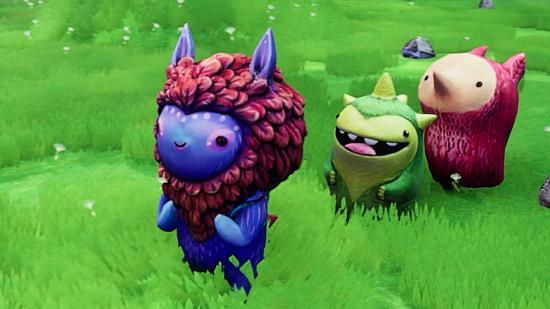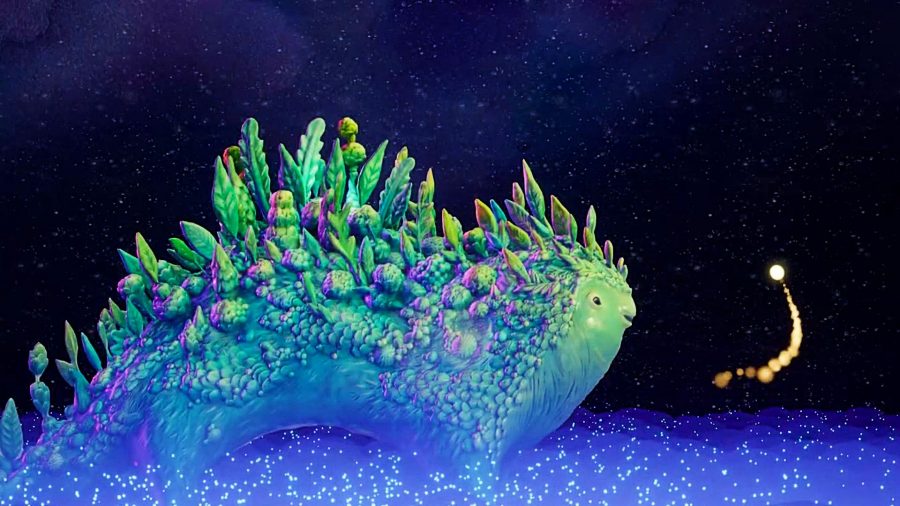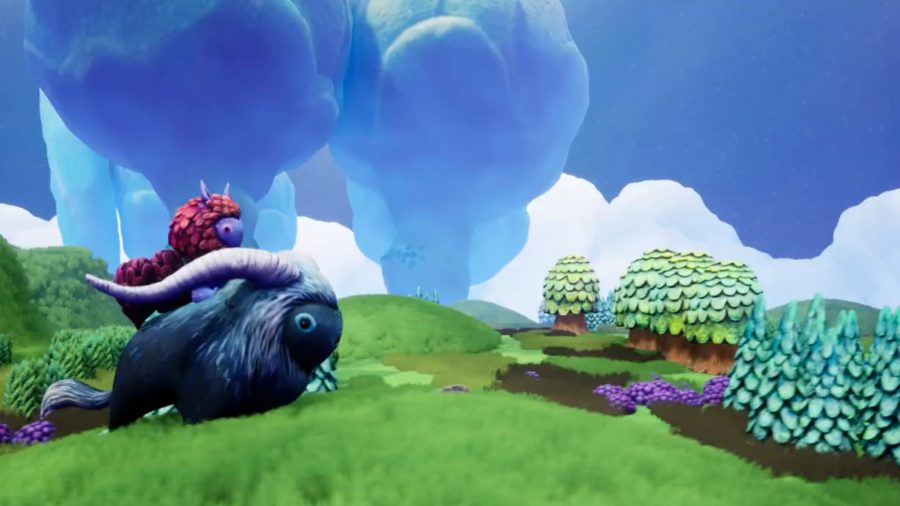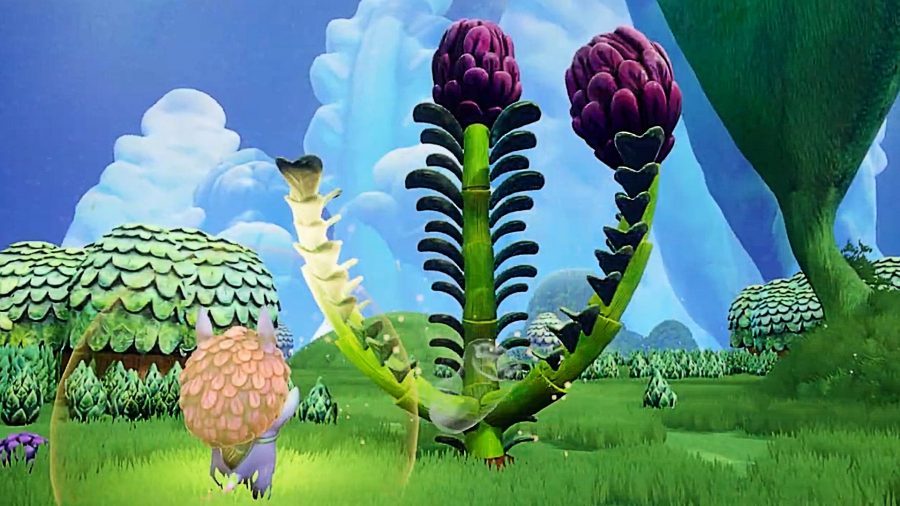OddFauna: Secret of the Terrabeast has a look that’s immediately striking. The roly-poly creatures that populate the game have a certain tactility to them, like the plasticine models used in old stop-motion animation. That’s not by any accident: developer Cliff Mitchell is using photoscans of artist (and wife) Emma SanCartier’s handcrafted artwork to create the game and its procedurally generated world.
“We are creating a living, breathing world that players get to explore and help grow,” Mitchell tells us. “It is a sandbox survival-growing game where the player’s actions have a direct impact on the world.”
SanCartier’s art is distinctive and magical, and her Instagram feed showcases her fanciful round woodland creatures that she’s brought to life in watercolour paintings, digital artwork, and sculpture. Some are part plant, with their coats covered in green leaves, while others are friendly little monsters with stubby horns and big smiles full of chompy teeth. “Everything in the game, the characters you play and meet, the objects you craft, and even the berries you eat, has been hand-sculpted by artist Emma SanCartier, the creator of OddFauna,” Mitchell says. “I photoscan those sculptures and bring them to life in the game. We work hard to capture the magic appeal of hand-crafted art; it’s what gives the game its distinct style.”
To do that, Mitchell has been using Unreal Engine 4, which he says is a breath of fresh air after working with proprietary tools for the majority of his career as a character tech artist in triple-A game design and feature films.
“That software was incredibly powerful, but always felt hacked together, full of friction points,” he says. “Often, knowledge of archaic systems was required; small simple things like importing a model could take 15 minutes. Unreal feels smooth as butter in comparison. Everything I expect should be simple to do in Unreal, is simple to do. Seems obvious, but this is actually very rare in software.”
OddFauna is an ambitious project, particularly for such a small development team. Mitchell says that made the decision to use Unreal an easy one. “As a solo indie dev, I need to work fast to be able to ship a game,” he explains. “Any friction in the process slows down development and threatens the game. Unreal Engine 4 has amazing forums and YouTube tutorial support – I can very quickly look up how to do something and execute it in engine. It was the obvious choice for my development.”
Despite a background in Python programming language, Mitchell wasn’t proficient in C++ when he began work on OddFauna. UE4’s Blueprint scripting system has been “quick and intuitive to use” for his programming needs.
“A Terrabeast is a huge world, procedurally generated with hundreds of thousands of objects, plants and pieces of terrain,” Mitchell says. “The player can plant, grow, and interact with each one of them. It is a real challenge to create a system that supports that design choice. I’m leveraging UE4’s Hierarchical Instance Static Mesh system to allow me to achieve that many objects but keep it manageable in terms of frames-per-second and memory.”
So, what will players do in this procedurally generated world? Mitchell hopes that the game will be a relaxing and creative experience for players when it releases. “Playing OddFauna is like spending a sunny Sunday tending to your garden. Unless of course you choose to follow that strange noise into the dark forest,” he says. “You can explore the vast world of the Terrabeast, spend your time meeting and befriending beasts of all different kinds. You can be a farmer, planting and growing crops. You can gather materials and craft useful gear for adventuring, or tend to the health of the world by putting out wildfires and fighting against the blight. You can also seek out the secret of the Terrabeast and discover how to grow a whole new world.”
That’s a lot of work for a solo indie dev, which is why Mitchell is looking forward to the enhancements promised by the next version of Unreal. “I am very excited to see UE5 embracing photoscanning even more,” he tells us. “My assets are all photoscanned by me; manually cleaning and optimizing them is a huge time cost. If I move to UE5 I am looking at shaving off up to six months of work from my schedule. That would be huge!”
Read more: Here are our picks for the best indie games
Beyond the engine itself, Mitchell also praises Epic’s developer support. “Epic is very supportive of their developers, including indie developers,” he says. “Over the years, they have even improved their support of indies; Epic Mega Grants, Indie developer portal, lowered engine fees, fair Epic Store dev fees. These factors make it easier to succeed as a business, and to continue to make and improve our games.”
OddFauna: Secret of the Terrabeast is still in early development. You can find out more about OddFauna at the official site, which also has more information about Secret of the Terrabeast. You can also support OddFauna on Patreon. Unreal Engine 4 is now free. Unreal Engine 5 is due to release this year.
In this sponsored series, we’re looking at how game developers are taking advantage of Unreal Engine 4 to create a new generation of PC games. With thanks to Cliff and Emma, and Epic Games.




